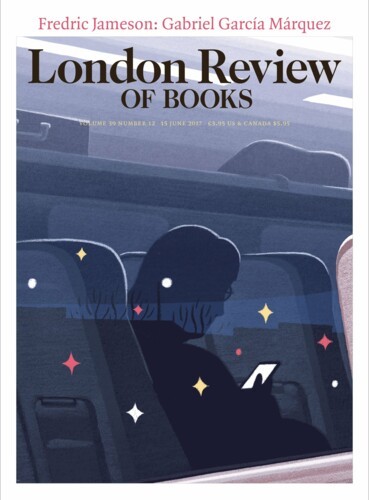The Open House weekend, when buildings across London open their doors to visitors, gets bigger every year: the most recent, its 23rd, featured more than 800 buildings and 2600 architect-led tours. Part of the pleasure lies in discovering so much of the city that is hidden from you: 10 Downing Street, the Cheesegrater, banks, halls and bell-towers; it's like walking onto a movie set, or into another life. It also indulges your nosiness about how other people live (and where): who knew there’s a three-bedroom flat at the top of St Pancras Station's clock tower, or that Lewisham has a whole cul-de-sac built on stilts?
Alice Spawls
Alice Spawls is co-editor of the LRB.
Francesca Woodman’s early death, at the age of 22, has cast a long shadow over her work. In the preceding years (her father gave her a camera when she was 13), especially those spent at Rhode Island School of Design and in New York, she produced a wealth of images: there are more than 10,000 negatives. This leaves a problem for her estate (her parents, George and Betty Woodman, are both artists) and her curators: it has been left to others to select, group and edit her archive. Eight hundred prints have been made, of which fewer than two hundred have been exhibited.
What is most striking about the retrospective of Edwin Smith’s photographs at the Royal Institute of British Architects (until 6 December) is his ability to capture the human relationship to buildings. A woman's silhouette in a shadowy side street is dwarfed by York Minster; a man in a suit casts a short shadow before the long shadows of the palatial façade of the Royal Exchange; a cat lingers uncertainly in the gateway to Ampton Hall.
It would be hard to draw a picture of one of Austen’s characters based on the books: the narrators offer little physical description at all (‘plain’, ‘tall’) and the other characters don’t go much further than ‘fair’ and ‘dark-eyed’ (how-much-a-year is far more significant). But Austen does tell us a lot about the way the valuation of appearance betrays prejudices. Bingley’s ardency is evident from his first sight of Jane – ‘Oh! she is the most beautiful creature I ever beheld!’ – and Elizabeth is as firm in her loyalty: ‘You were about five times as pretty as every other woman in the room.' Darcy considers Elizabeth ‘barely tolerable’ to begin with, but by the end declares her ‘one of the handsomest women of my acquaintance’.
At Southwold harbour the other weekend the fishermen were doing a busy trade, selling lobsters to visitors who had come for the sunshine and the sea, though the sea was still cold and grey, turning murky brown as the tide swelled with silt and pebbles. The crag that makes up much of the Suffolk coast is the softest and youngest rock in the UK, and especially vulnerable to erosion. Southwold is very nearly an island, cut off by the River Blyth to the south-west and Buss Creek to the north. Since the Environment Agency announced plans to stop maintaining the estuary in 2007, local groups have been repairing breaches, preserving the freshwater marshes and maintaining the 400-year-old clay walls along the Blyth (known as ‘slubbing the banks’).
Read anywhere with the London Review of Books app, available now from the App Store for Apple devices, Google Play for Android devices and Amazon for your Kindle Fire.
Sign up to our newsletter
For highlights from the latest issue, our archive and the blog, as well as news, events and exclusive promotions.

